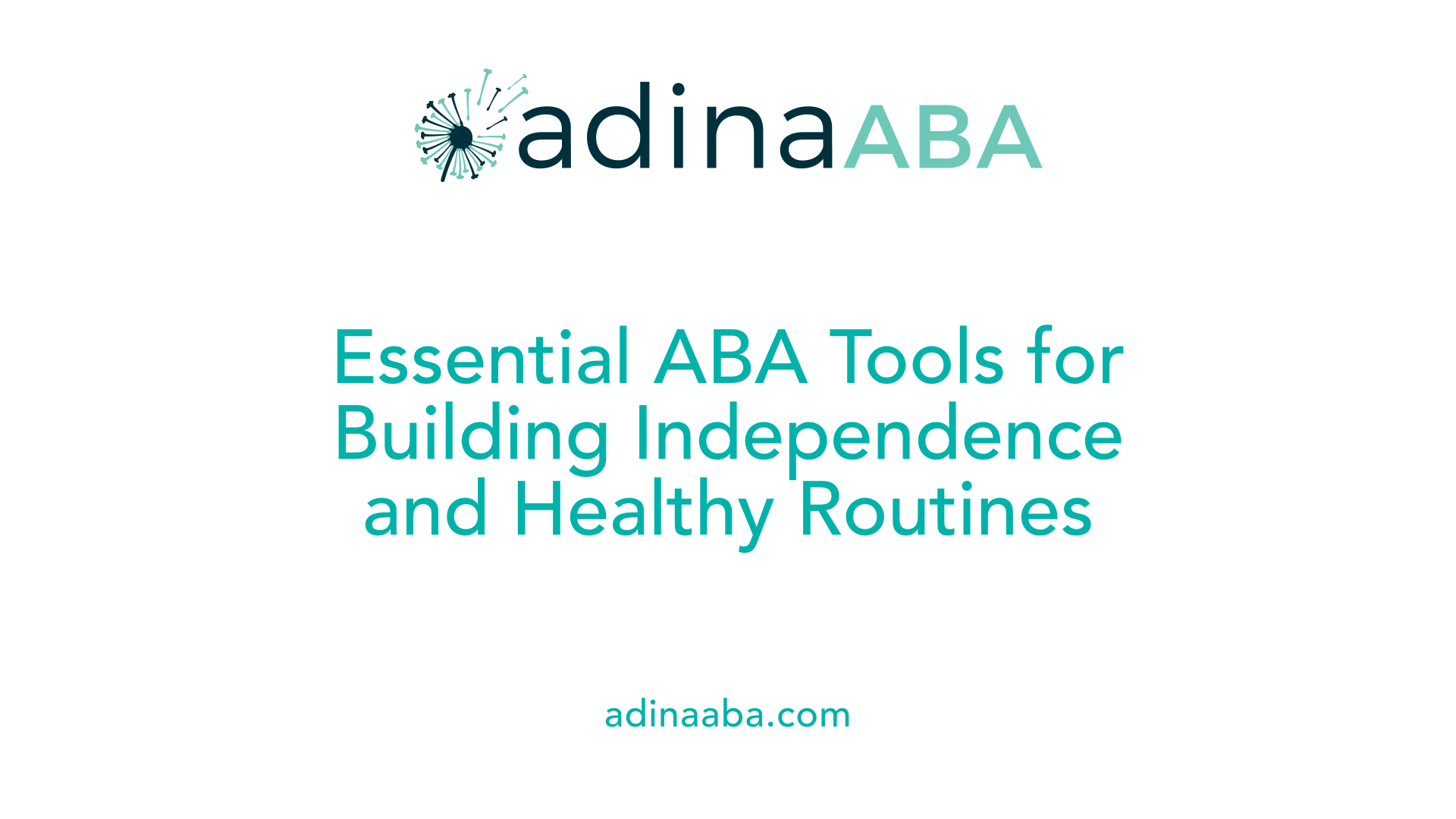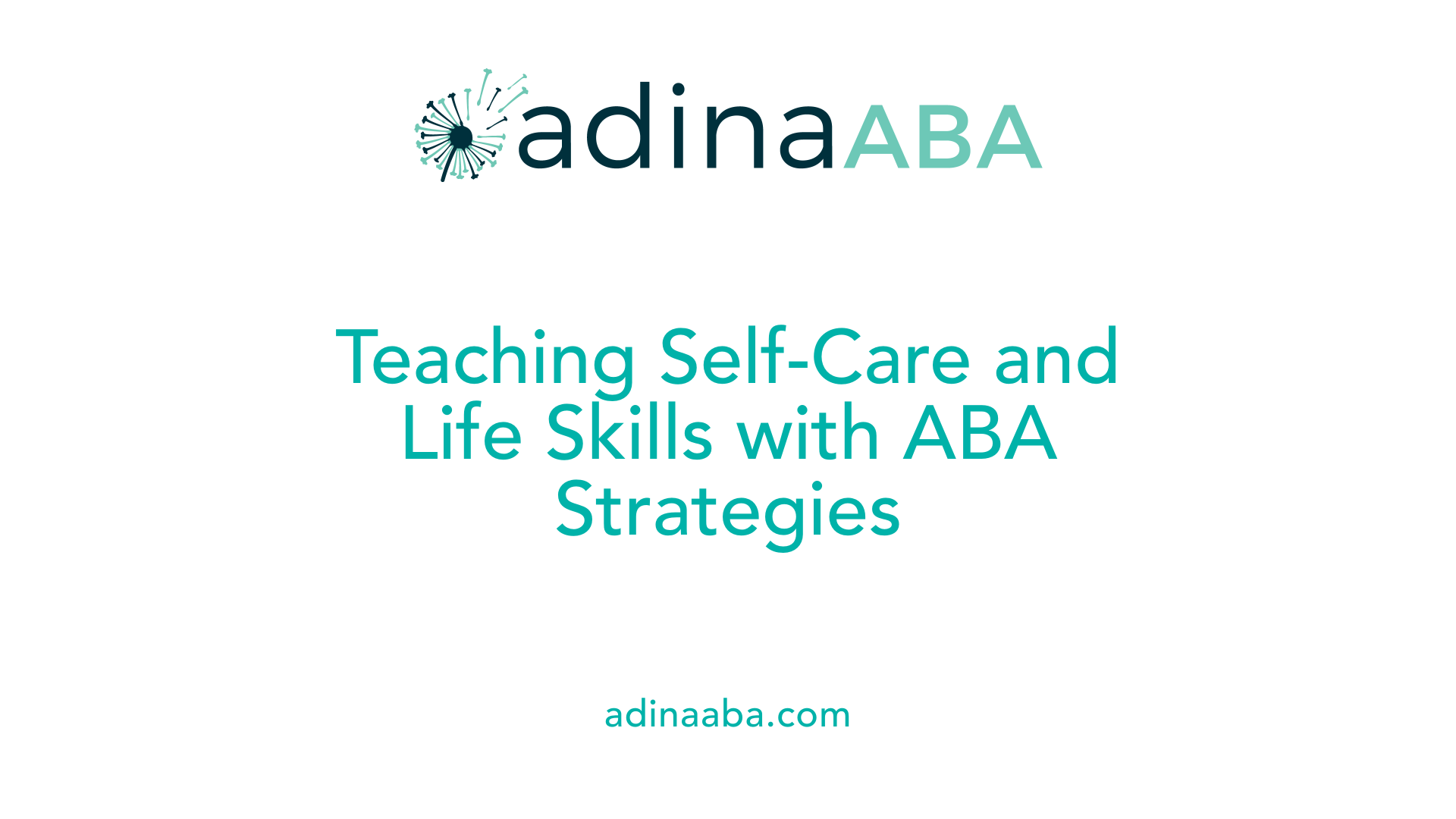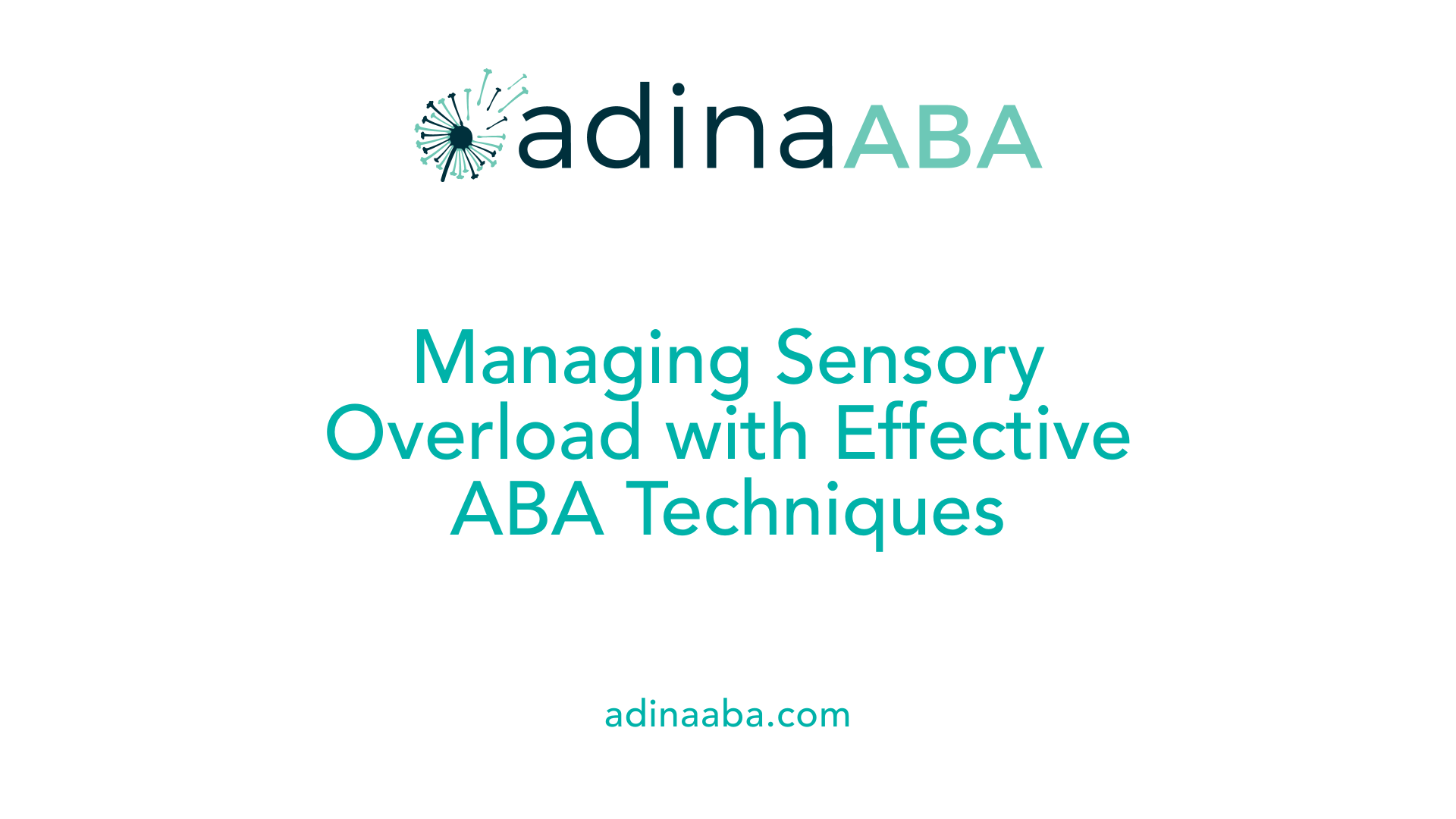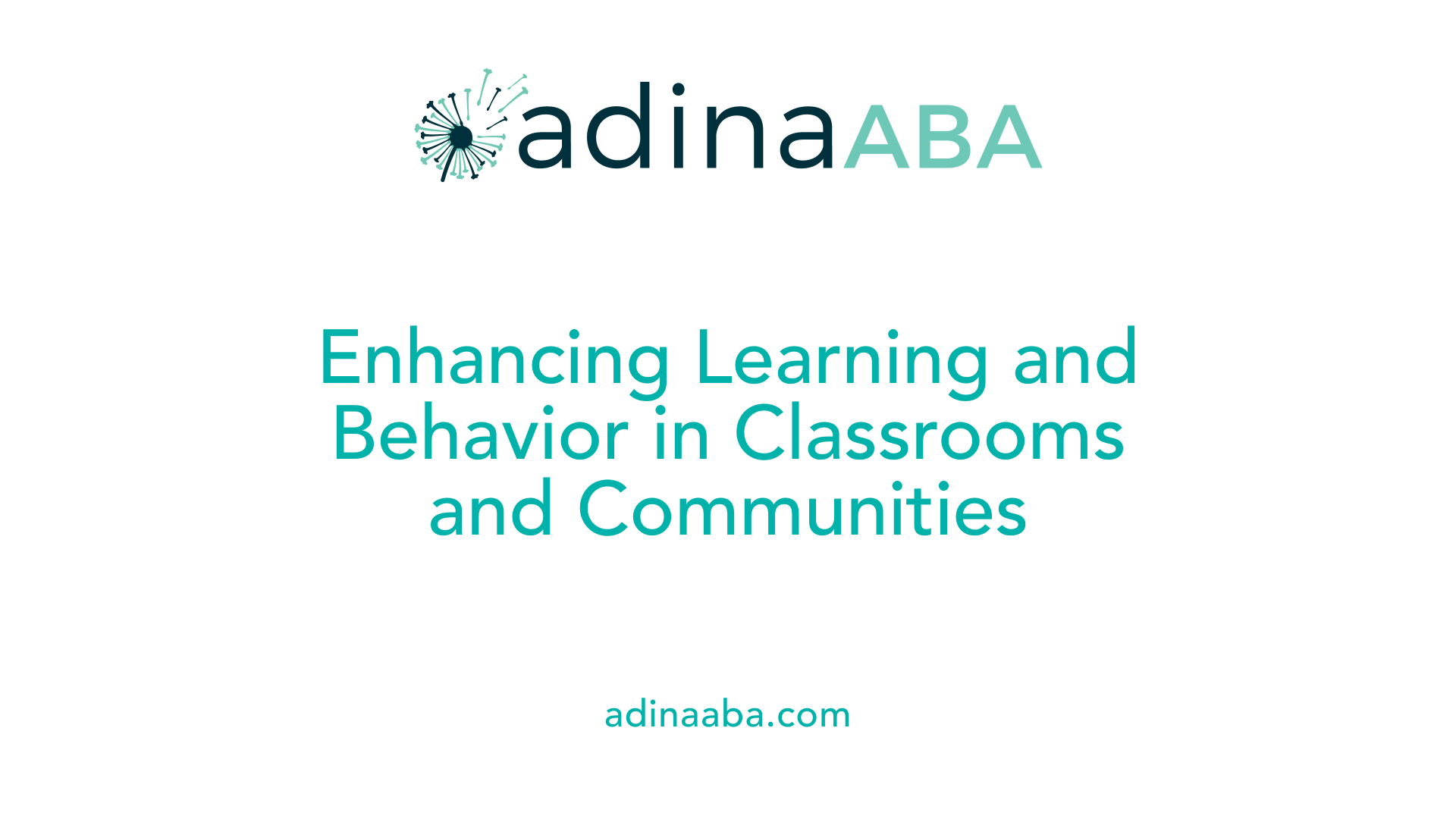ABA tools for teaching healthy habits

Understanding the Role of ABA in Promoting Healthy Habits
Applied Behavior Analysis (ABA) is a scientifically validated approach that is extensively used to help children and individuals with autism develop essential life skills and healthy habits. Through individualized therapy plans incorporating specific tools and strategies, ABA aims to foster independence, improve daily functioning, and enhance overall well-being. This article explores how ABA tools are used to teach healthy habits, covering effective techniques, assessment tools, behavioral strategies, sensory integration, and practical applications across settings.
Key ABA Tools for Promoting Healthy Habits and Independence

What tools are used in ABA to promote healthy habits and independence?
Applied Behavior Analysis (ABA) utilizes a range of assessment tools and behavioral strategies to foster independence and develop healthy habits among children with autism. These tools provide a detailed understanding of a child's current abilities and areas requiring support.
Among the most common assessment instruments are the VB-MAPP (Verbal Behavior Milestones Assessment and Placement Program), ABLLS-R (Assessment of Basic Language and Learning Skills-Revised), AFLS (Assessment of Functional Living Skills), Vineland Adaptive Behavior Scales, and the Social Skills Rating System. These standardized measures help clinicians evaluate a child's communication, social skills, daily living abilities, and overall adaptive functioning.
Using these assessments, therapists can craft personalized treatment plans that target specific skill gaps. They also enable progress tracking over time, allowing intervention adjustments to best meet the child's evolving needs.
In addition to assessments, ABA employs practical behavioral strategies such as task analysis, chaining, reinforcement, and prompting.
- Task Analysis breaks complex activities into smaller, manageable steps, making learning more accessible.
- Chaining involves teaching each step in a sequence, reinforcing successful completion until the full task is performed independently.
- Reinforcement systems encourage desired behaviors by providing praise, rewards, or other motivating stimuli.
- Prompting assists the child in performing tasks correctly initially, gradually fading as independence increases.
Together, these tools and strategies create an effective framework for teaching essential life skills. By continuously monitoring progress and adjusting interventions, ABA practitioners support children in gaining independence and establishing healthy routines for daily living.
Using ABA Techniques to Teach Self-Care and Life Skills

How does ABA therapy teach self-care, hygiene, and life skills?
ABA therapy employs various strategies like task analysis, prompting, positive reinforcement, and visual supports to help children learn essential self-care and life skills. These methods break down complex activities into manageable steps, making it easier for children to master routines such as brushing teeth, dressing, or managing personal responsibilities.
Teaching hygiene, daily routines, and personal responsibility
Visual schedules and social stories are common tools used to outline daily routines, helping children understand what is expected at different times of the day. Forward and backward chaining techniques introduce skills step-by-step until they are performed independently. Reinforcers like praise or preferred activities motivate children to practice and retain these routines.
Enhancing independence and healthy habits
In addition to learning specific tasks, ABA helps cultivate general independence and healthy behaviors. For example, teaching self-management skills like planning and organization supports daily functioning. ABA also emphasizes developing healthy habits such as regular exercise, nutritious eating, and good sleep routines, which contribute to overall well-being.
How ABA methods are structured for success
Therapists use structured teaching strategies such as direct instruction and functional communication to promote understanding. The use of visual supports and the 'first then' rule ensures clarity and motivation, encouraging children to take an active role in their growth.
| Technique | Purpose | Example |
|---|---|---|
| Task analysis | Breaks down skills | Teaching handwashing step-by-step |
| Prompting | Guides responses | Verbally prompting or gesturing |
| Reinforcement | Increases positive behavior | Praising a child after successful completion |
| Visual supports | Clarifies routines | Using picture schedules |
This personalized approach, tailored to each child's interests and needs, is supported by extensive research and is a standard in effective autism support. It promotes not only skill acquisition but also confidence and long-term independence.
Managing Sensory Overload with ABA-Compatible Techniques

What are some sensory integration techniques used in ABA to manage sensory overload?
Therapists experienced in ABA therapy often incorporate sensory tools to help children with autism manage sensory overload. These tools include weighted blankets, which provide calming pressure; fidget toys that allow for tactile stimulation; and soothing background music that can help relax the nervous system. By integrating these sensory items into therapy sessions or daily routines, children find it easier to stay calm and focused.
Use of sensory tools (weighted blankets, fidget toys, soothing music)
Weighted blankets are designed to apply gentle pressure, which can have a calming effect on the nervous system. Similarly, fidget toys engage the child's tactile senses and can reduce anxiety or restlessness. Soothing music or nature sounds are also used to create a peaceful environment, helping children regulate their emotions and sensory responses.
Creating sensory-friendly environments
A sensory-friendly environment is crucial for supporting children with autism. This includes adjusting lighting to be less harsh, reducing background noise, and incorporating calming elements like soft textures or visual calming aids. Such environments make it easier for children to engage in learning and play without becoming overwhelmed.
Teaching regulation strategies
ABA therapy also teaches children specific skills to self-regulate their sensory responses. Techniques like deep breathing, using sensory tools proactively, and participating in calming routines help children identify when they are overwhelmed and respond appropriately. These strategies foster independence in managing their sensory needs and reduce stress over time.
By combining sensory tools, environment adjustments, and regulation techniques, ABA therapy equips children with autism to better handle sensory challenges. These approaches are supported by research and aim to improve overall wellbeing and functional skills.
Preventive Strategies in ABA to Minimize Problematic Behaviors
What preventive strategies does ABA include to reduce problematic behaviors?
ABA (Applied Behavior Analysis) utilizes several proactive methods to minimize challenging behaviors in children with autism. The foundation of these strategies lies in understanding and addressing the causes of problematic behaviors before they occur.
One of the primary approaches involves teaching alternative communication skills. Many children resort to disruptive behaviors when they are unable to express their needs. Techniques such as sign language or picture exchange communication systems (PECS) help children communicate effectively, reducing frustration and aggressive responses.
Functional behavior assessments (FBAs) play a crucial role in identifying specific triggers that lead to undesirable behaviors. Once identified, caregivers and therapists work together to modify routines or environments, minimizing overstimulation or stressors that may provoke problematic conduct.
Reinforcement is also central to prevention. Positive reinforcement encourages the display of appropriate behaviors, making these responses more likely to occur. Differential reinforcement methods further emphasize rewarding desirable actions and reducing attention to negative behaviors.
Environmental modifications include creating a calm, structured setting with visual schedules and visual cues to guide behavior. Incorporating engaging, positive activities reduces the likelihood of boredom or frustration that often triggers problem behavior.
Prevention strategies also involve comprehensive planning, such as setting clear expectations and using consistent routines. These practices help children anticipate and adapt to daily activities, decreasing anxiety and the chance of behavioral outbursts.
Overall, ABA’s preventive techniques focus on early intervention by promoting communication, reducing triggers, and encouraging adaptive behaviors through positive reinforcement, ultimately supporting children in developing healthier, more functional responses to their environment.
ABA Application in Classroom and Community Settings

How is ABA applied in classroom settings to promote appropriate behavior?
Applied behavior analysis (ABA) is a widely used approach in educational environments to support children with autism in developing essential skills and reducing harmful behaviors. One common method is discrete trial training, which breaks down complex skills like communication or social interactions into small, manageable steps. These steps are then practiced repeatedly with clear prompts and immediate praise, helping children learn effectively.
Naturalistic teaching strategies also play a vital role. These techniques involve integrating learning into everyday activities and interests, such as play or routine classroom tasks. For example, using a child's favorite toy to encourage language use or social exchanges makes learning relevant and engaging.
Reinforcement systems are crucial in ABA to motivate positive behaviors. Token economies, where children earn tokens for desired behaviors and redeem them for rewards, are common. These tangible incentives help children understand the link between their actions and positive outcomes.
Social stories and visual supports such as schedules, pictures, and checklists aid children in understanding expectations and navigating the classroom routines. These visual tools help reduce anxiety and clarify complex social or behavioral rules.
Moreover, functional behavior assessments identify triggers for problem behaviors and guide tailored behavior plans. These plans often include specific strategies like contingent observation—where a child observes peers demonstrating good behavior—or targeted social skills training.
Creating a supportive environment involves consistent routines, clear expectations, and positive reinforcement, all grounded in evidence-based practices. This approach not only improves behavior but also fosters socialization, independence, and academic success.
The Evidence Supporting ABA in Developing Healthy Habits

What is the evidence for the effectiveness of ABA in developing healthy habits?
Applied Behavior Analysis (ABA) is backed by a strong foundation of research and empirical data demonstrating its success in promoting healthy behaviors. Numerous studies show that ABA techniques can effectively encourage children and adults to adopt better diet, exercise, and hygiene routines.
Research indicates that using reinforcement strategies, modeling, visual supports, and breaking complex skills into manageable steps lead to meaningful improvements in health-related behaviors. For example, children receiving ABA therapy often display increased independence in activities such as eating nutritious foods, participating in physical activities, and maintaining personal hygiene.
Beyond autism spectrum disorder (ASD), ABA techniques are increasingly applied in broader health promotion and chronic disease management. These interventions enhance self-regulation, adherence to medical routines, and healthy lifestyle choices.
Long-term outcomes from intensive ABA programs show durable benefits, including improved daily routines and increased self-care. These results come from rigorous evaluation, including controlled studies and longitudinal follow-ups.
Overall, the personalized, data-driven nature of ABA makes it a versatile and effective method for fostering healthful habits, supporting overall wellness, and maintaining positive lifestyles across various populations.
Empowering Autistic Individuals Through ABA-Based Healthy Habits
In conclusion, ABA tools are fundamental in teaching and reinforcing healthy habits, self-care skills, and independence for individuals with autism. Their evidence-based strategies, personalized approaches, and engaging tools support meaningful behavior change and improved quality of life. As research continues to validate these methods, ABA remains a cornerstone of effective autism support, helping individuals achieve greater autonomy and well-being in their everyday lives.
References
- How ABA Therapy Creates Healthy Habits - Circle Care Services
- How to Teach Students With Autism Healthy Habits, Life Skills, and ...
- ABA Therapy Tools: Unlocking Your Child's Potential Through Play ...
- Applied Behavior Analysis (ABA) | Autism Speaks
- Ways ABA Enhances Health and Independence for Autistic Adults
- How to Build Healthy Habits for Children with Autism | All Star ABA
- How Can Applied Behavior Analysis Promote Health and Wellness?
- Applied Behavior Analysis (ABA) | Autism Speaks
- The effectiveness of applied behavior analysis program training on ...
More Resources
Expert Clinicians
Get started today ->






